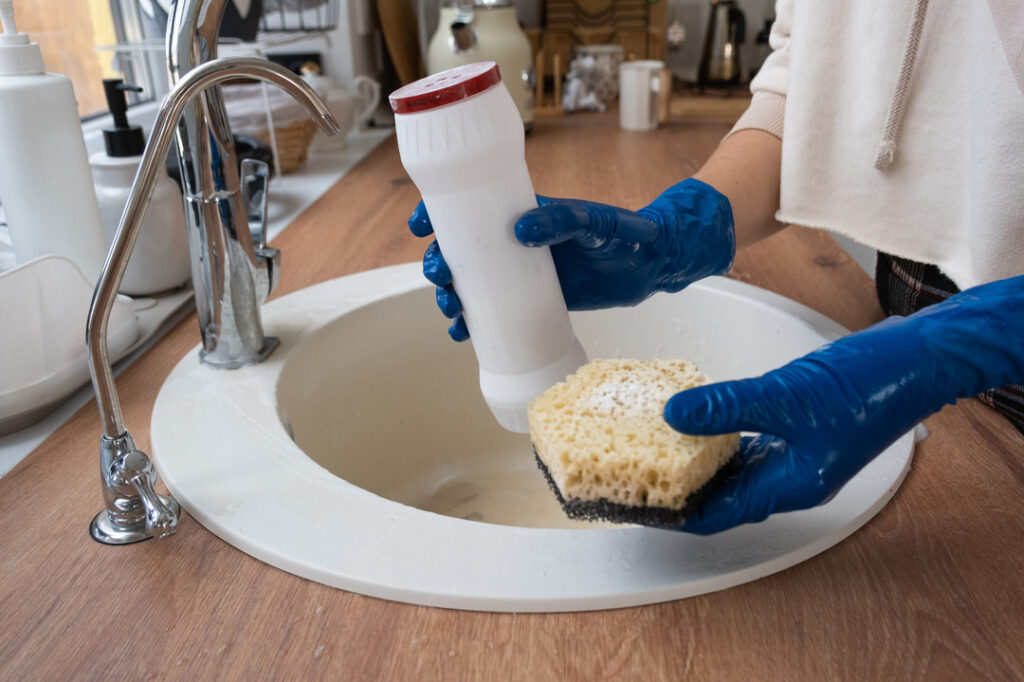When it comes to home maintenance, dealing with clogged drains is one of the least glamorous but most necessary tasks. Whether it’s a slow-draining sink or a full-blown sewer backup, clogs can disrupt daily life and even lead to costly repairs.
That’s where knowing the right drain cleaning methods can make all the difference—from simple hair clogs to stubborn grease blockages, each issue often demands its own solution.
As a drain cleaning company, we at Drain Tech have tackled all kinds of plumbing problems. This guide will walk you through the most common drain cleaning methods so that you can know which solutions may work best for you.
Why Professional Drain Cleaning Matters
While DIY methods might seem like the quickest and cheapest option when you’ve got a clog, they often provide only temporary relief. Many tools and products designed for consumer use simply don’t have the power or precision to fully remove blockages. Worse, they sometimes cause additional damage to your pipes.
That’s why hiring a trusted drain cleaning company like ours makes sense. Our expertise, professional-grade equipment, and tailored strategies ensure that your plumbing gets the care it needs to remain functional and safe. Plus, we don’t just solve the issue—we help you prevent future problems.
Now, let’s explore the various methods used to tackle clogs.
1. Drain Snaking (Augers)
Drain snakes, also called plumbing augers, are one of the most commonly used tools for minor clogs. This method involves inserting a long, flexible wire down the pipe to physically break up blockages.
How Does It Work?
Drain snakes come in two main types:
- Manual Snakes: Operated by hand, these are ideal for small, localized clogs like hair or food particles.
- Motorized Snakes: More powerful than manual options, motorized snakes can tackle tougher blockages deeper in the pipes.
When to Use It
Drain snaking works best for:
- Hair buildup in bathroom drains.
- Small items or debris stuck in kitchen sinks.
- Shallow clogs near the drain opening.
Pros and Cons
Pros:
- Affordable and widely available.
- Works well for minor clogs.
- Less invasive than some other methods.
Cons:
- Not as effective for grease or tree root blockages.
- May not fully remove deep or stubborn clogs.
2. Hydro Jetting
Hydro jetting is a more advanced drain cleaning method that uses high-pressure water jets to clear obstructions and clean the interior of pipes.
How Does It Work?
Drain cleaning companies like Drain Tech insert a specialized hose into the drain line, which shoots water at extremely high pressure to break up debris, flush out grease, and even remove tree roots.
When to Use It
Hydro jetting is ideal for:
- Severe blockages in sewer lines.
- Grease buildup in kitchen drains.
- Removing tree roots that have infiltrated pipes.
Advantages
- Eco-Friendly: No need for chemicals.
- Thorough Cleaning: Removes buildup and residue, restoring pipes to near-original condition.
- Long-Lasting Results: Prevents new clogs from forming quickly.
3. Chemical Drain Cleaners
Chemical drain cleaners are a quick and widely available option for tackling clogs, but they come with significant trade-offs.
Types of Chemical Cleaners
- Enzymatic Cleaners: Use natural enzymes to break down organic matter.
- Caustic Cleaners: Contain strong chemicals to dissolve grease, hair, and other debris.
When to Use Them
These are best for:
- Organic clogs like food particles, hair, and soap scum.
- Temporary relief for minor blockages.
Risks of Using Chemicals
- Pipe Damage: Overuse can corrode pipes, especially older plumbing.
- Environmental Concerns: Harmful chemicals can enter water systems.
- Limited Effectiveness: They often don’t work on severe or deep-seated clogs.
If you’re considering chemical cleaners, we recommend consulting with a drain cleaning company like Drain Tech first to avoid potential harm to your plumbing.
4. Air Burst Drain Cleaning
Air burst methods use compressed air or CO2 to dislodge clogs near drain openings.
How Does It Work?
A burst of air is released into the pipe, delivering powerful pressure to break apart minor blockages.
Best Applications
- Minor clogs close to the surface.
- Particularly useful for sinks and showers.
Pros and Cons
Pros:
- Quick and easy to use.
- Minimally invasive.
Cons:
- Limited effectiveness for deep or severe clogs.
- May not be suitable for tough buildups or roots.
5. Drain Rodding
An older but reliable technique, drain rodding involves using long, flexible rods to manually push through blockages.
How Does It Work?
The rods are inserted into the pipe and connected together to reach distant clogs. The blockage is either broken apart or pushed into the main sewer line.
Best Uses
- Deep blockages in sewer systems.
- Tree root intrusions.
Comparison to Other Methods
While rodding is effective for tough clogs, it’s not as thorough as hydro jetting and may leave some debris behind.
Don’t Wait Until Problems Get Worse
Clogged drains aren’t just inconvenient—they can lead to serious plumbing issues, property damage, and costly repairs if left unaddressed. Whether you’re battling stubborn grease, tree roots, or recurring backups, our team at Drain Tech has the expertise and tools to provide a customized, effective solution.
If you’re ready to learn more about our services or schedule your next professional cleaning, contact us today. Together, we’ll make sure your drains stay clean, clear, and worry-free.



